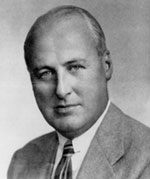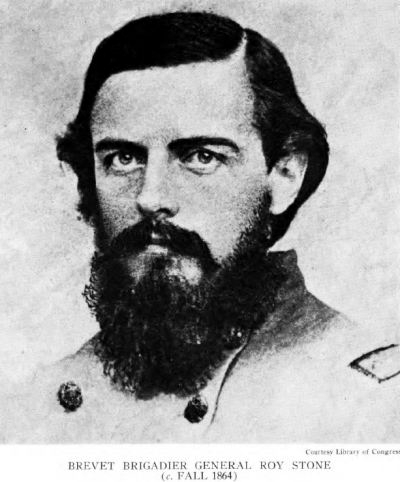|
Federal Aid Highway System
The U.S. federal-aid highway program was commenced in 1916, with milestones of Federal-Aid Highway Act of 1944 and Federal-Aid Highway Act of 1956. Before the Interstate Highway System was established in 1956, the federal-aid highway system consisted of three parts: * The Interstate Highway System (FAI routes) * The Federal-aid primary highway system (FAP system) is a system of connected main highways, selected by each state highway department subject to the approval of the Bureau of Public Roads. It encompasses routes of the Interstate System and other important routes serving essentially through traffic with their urban extensions, including important loops, belt highways, and spurs. * The Federal-aid secondary highway system (FAS system) consists of the principal secondary and feeder routes, including farm-to-market roads, rural mail and public school bus routes, local rural roads, county and township roads, roads of the county, road class, and their urban extensions. These ... [...More Info...] [...Related Items...] OR: [Wikipedia] [Google] [Baidu] |
Federal-Aid Highway Act Of 1944
The Federal-Aid Highway Act of 1944 (; ) is legislation enacted by the United States Congress and signed into law on December 20, 1944, which established a 50–50 formula for subsidizing the construction of national highways and secondary (or "feeder") roads. The legislation established a National System of Interstate Highways, and required the Public Roads Administration to establish construction and operational standards for the Interstate Highway System. Legislative history of the act President Franklin D. Roosevelt saw highways as both essential to national defense and the economy, as well as a means of putting unemployed people to work. On April 14, 1941, Roosevelt appointed a National Interregional Highway Committee to study the need for a limited system of national inter-state highways. The committee's report, ''Interregional Highways'', released on January 14, 1943, recommended constructing a interstate highway system. ''Interregional Highways'' prompted Congress to a ... [...More Info...] [...Related Items...] OR: [Wikipedia] [Google] [Baidu] |
Federal-Aid Highway Act Of 1956
The Federal-Aid Highway Act of 1956, also known as the National Interstate and Defense Highways Act, was enacted on June 29, 1956, when President Dwight D. Eisenhower signed the bill into law. With an original authorization of $25 billion (equivalent to $ in ) for the construction of of the Interstate Highway System over a 10-year period, it was the largest public works project in American history through that time. The addition of the term ''defense'' in the act's title was because some of the original cost was diverted from defense funds and "because of he Interstate Highway System' primary importance to the national defense". The money for the Interstate Highway and Defense Highways was handled in a Highway Trust Fund that paid for 90 percent of highway construction costs with the states required to pay the remaining 10 percent. It was expected that the money would be generated through new taxes on fuel, automobiles, trucks, and tires. As a matter of practice, the f ... [...More Info...] [...Related Items...] OR: [Wikipedia] [Google] [Baidu] |
Interstate Highway System
The Dwight D. Eisenhower National System of Interstate and Defense Highways, commonly known as the Interstate Highway System, or the Eisenhower Interstate System, is a network of controlled-access highways that forms part of the National Highway System (United States), National Highway System in the United States. The system extends throughout the contiguous United States and has routes in Hawaii, Alaska, and Puerto Rico. In the 20th century, the United States Congress began funding roadways through the Federal Aid Road Act of 1916, and started an effort to construct a national road grid with the passage of the Federal Aid Highway Act of 1921. In 1926, the United States Numbered Highway System was established, creating the first national road numbering system for cross-country travel. The roads were funded and maintained by U.S. states, and there were few national standards for road design. United States Numbered Highways ranged from two-lane country roads to multi-lane free ... [...More Info...] [...Related Items...] OR: [Wikipedia] [Google] [Baidu] |
Bureau Of Public Roads
The Federal Highway Administration (FHWA) is a division of the United States Department of Transportation that specializes in highway transportation. The agency's major activities are grouped into two programs, the Federal-aid Highway Program and the Federal Lands Highway Program. Its role had previously been performed by the Office of Road Inquiry, Office of Public Roads and the Bureau of Public Roads. History Background With the coming of the bicycle in the 1890s, interest grew regarding the improvement of streets and roads in America. The traditional method of putting the burden on maintaining roads on local landowners was increasingly inadequate. In 1893, the federal Office of Road Inquiry (ORI) was founded; in 1905, it was renamed the Office of Public Roads (OPR) and made a division of the United States Department of Agriculture. Demands grew for local and state government to take charge. With the coming of the automobile, urgent efforts were made to upgrade and moderniz ... [...More Info...] [...Related Items...] OR: [Wikipedia] [Google] [Baidu] |
Farm-to-market Road
In the United States, a farm-to-market road or ranch-to-market road (sometimes farm road or ranch road for short) is a state highway or county road that connects rural or agricultural areas to market towns. These are better-quality roads, usually a highway, that farmers and ranchers use to transport products to market towns or distribution centers. Historically used throughout the country, today the term is primarily associated with a large state-maintained highway system in Texas. History By 1930, counties and townships across the U.S. had built a large number of farm-to-market roads, many of which were in need of repairs and safety improvements. The Chief of the Bureau of Public Roads, Thomas Harris MacDonald, considered this need to be driven not by insufficient funding but by inefficient planning and inadequate equipment on the part of thousands of counties. He advocated for an expansion of state-maintained highway systems through the federal-aid highway program, so that ... [...More Info...] [...Related Items...] OR: [Wikipedia] [Google] [Baidu] |
1916 Introductions
Events Below, the events of the First World War have the "WWI" prefix. January * January 1 – The British Empire, British Royal Army Medical Corps carries out the first successful blood transfusion, using blood that has been stored and cooled. * January 9 – WWI: Gallipoli Campaign – The last British troops are evacuated from Gallipoli, as the Ottoman Empire prevails over a joint British and French operation to capture Constantinople. * January 10 – WWI: Erzurum Offensive – Russia defeats the Ottoman Empire. * January 12 – The Gilbert and Ellice Islands Colony, part of the British Empire, is established in modern-day Tuvalu and Kiribati. * January 13 – WWI: Battle of Wadi (1916), Battle of Wadi – Ottoman Empire forces defeat the British, during the Mesopotamian campaign in modern-day Iraq. * January 29 – WWI: Paris is bombed by German Empire, German zeppelins. * January 31 – WWI: An attack is planned on Verdun, France. Febru ... [...More Info...] [...Related Items...] OR: [Wikipedia] [Google] [Baidu] |
Federal Highway Administration
The Federal Highway Administration (FHWA) is a division of the United States Department of Transportation that specializes in highway transportation. The agency's major activities are grouped into two programs, the Federal-aid Highway Program and the Federal Lands Highway Program. Its role had previously been performed by the Office of Road Inquiry, Office of Public Roads and the Bureau of Public Roads. History Background With the coming of the bicycle in the 1890s, interest grew regarding the improvement of streets and roads in America. The traditional method of putting the burden on maintaining roads on local landowners was increasingly inadequate. In 1893, the federal Office of Road Inquiry (ORI) was founded; in 1905, it was renamed the Office of Public Roads (OPR) and made a division of the United States Department of Agriculture. Demands grew for local and state government to take charge. With the coming of the automobile, urgent efforts were made to upgrade and moderniz ... [...More Info...] [...Related Items...] OR: [Wikipedia] [Google] [Baidu] |
Highways In The United States
Highways are split into at least four different types of systems in the United States: Interstate Highways, U.S. Highways, state highways, and county highways. Highways are generally organized by a route number or letter. These designations are generally displayed along the route by means of a highway shield. Each system has its own unique shield design that will allow quick identification to which system the route belongs. History In 1918, Wisconsin became the first state to number its highways in the field followed by Michigan the following year. In 1926 the American Association of State Highway Officials (AASHO) established and numbered interstate routes (United States Numbered Highways), selecting the best roads in each state that could be connected to provide a national network of federal highways. Interstate Highways The Interstate Highway System is a federally funded and administered but state-maintained system of freeways that forms the transportation backbone of the ... [...More Info...] [...Related Items...] OR: [Wikipedia] [Google] [Baidu] |
Road Infrastructure In The United States
A road is a thoroughfare used primarily for movement of traffic. Roads differ from streets, whose primary use is local access. They also differ from stroads, which combine the features of streets and roads. Most modern roads are paved. The words "road" and "street" are commonly considered to be interchangeable, but the distinction is important in urban design. There are many types of roads, including parkways, avenues, controlled-access highways (freeways, motorways, and expressways), tollways, interstates, highways, and local roads. The primary features of roads include lanes, sidewalks (pavement), roadways (carriageways), medians, shoulders, verges, bike paths (cycle paths), and shared-use paths. Definitions Historically, many roads were simply recognizable routes without any formal construction or some maintenance. The Organization for Economic Co-operation and Development (OECD) defines a road as "a line of communication (travelled way) using a stabilized base oth ... [...More Info...] [...Related Items...] OR: [Wikipedia] [Google] [Baidu] |
Transport Economics
Transport economics is a branch of economics founded in 1959 by American economist John R. Meyer that deals with the resource allocation, allocation of resources within the transport sector. It has strong links to civil engineering. Transport economics differs from some other branches of economics in that the assumption of a spaceless, instantaneous economy does not hold. People and goods flow over networks at certain speeds. Demands peak. Advance ticket purchase is often induced by lower fares. The networks themselves may or may not be competitive. A single trip (the final good, in the consumer's eyes) may require the bundling of services provided by several firms, agencies and modes. Although transport systems follow the same supply and demand theory as other industries, the complications of network effects and choices between dissimilar goods (e.g. car and bus travel) make estimating the demand for transportation facilities difficult. The development of models to estimate the ... [...More Info...] [...Related Items...] OR: [Wikipedia] [Google] [Baidu] |






